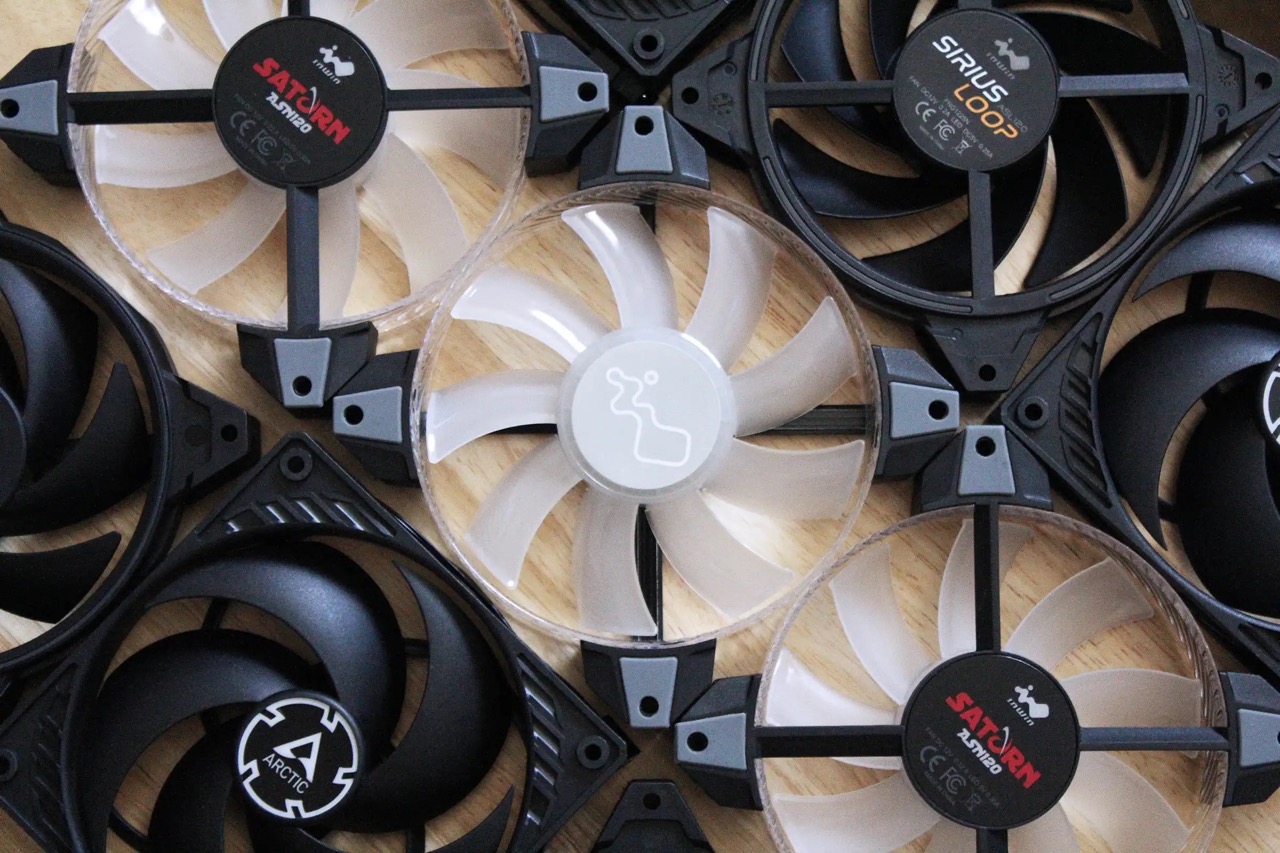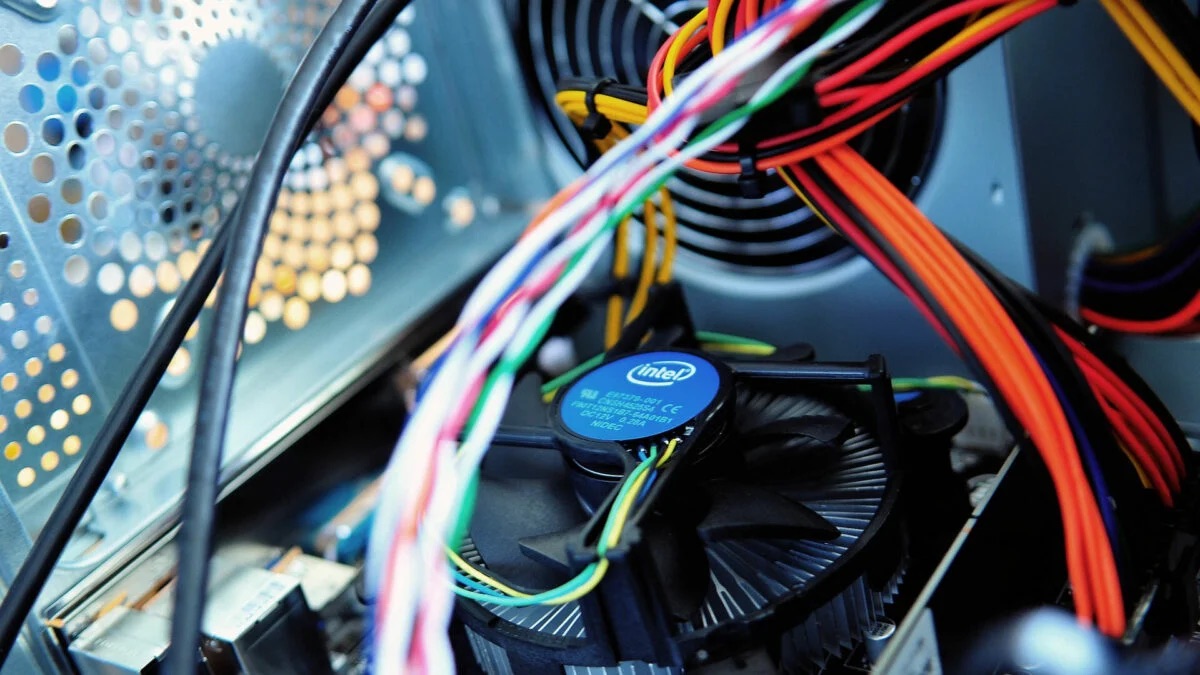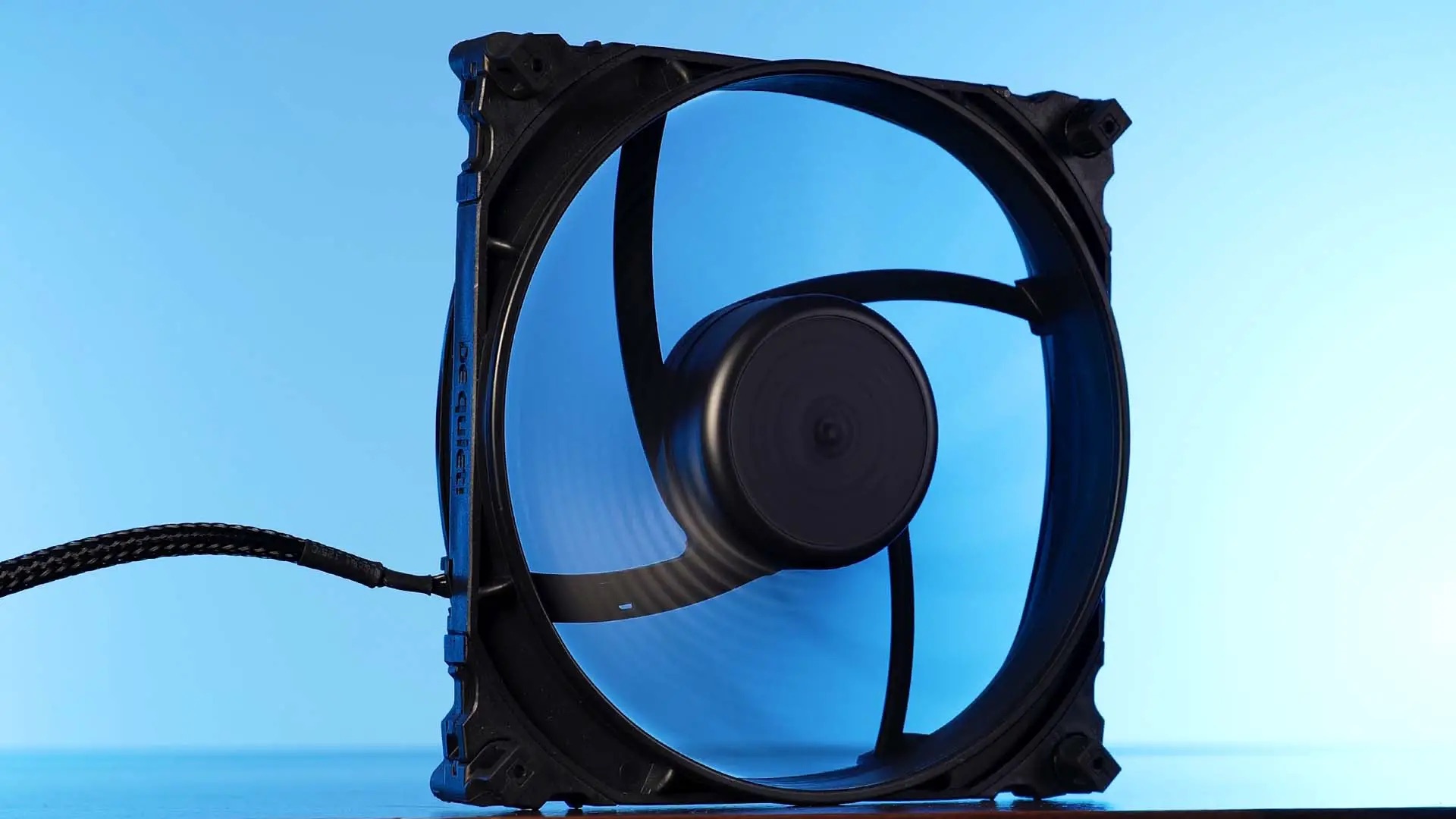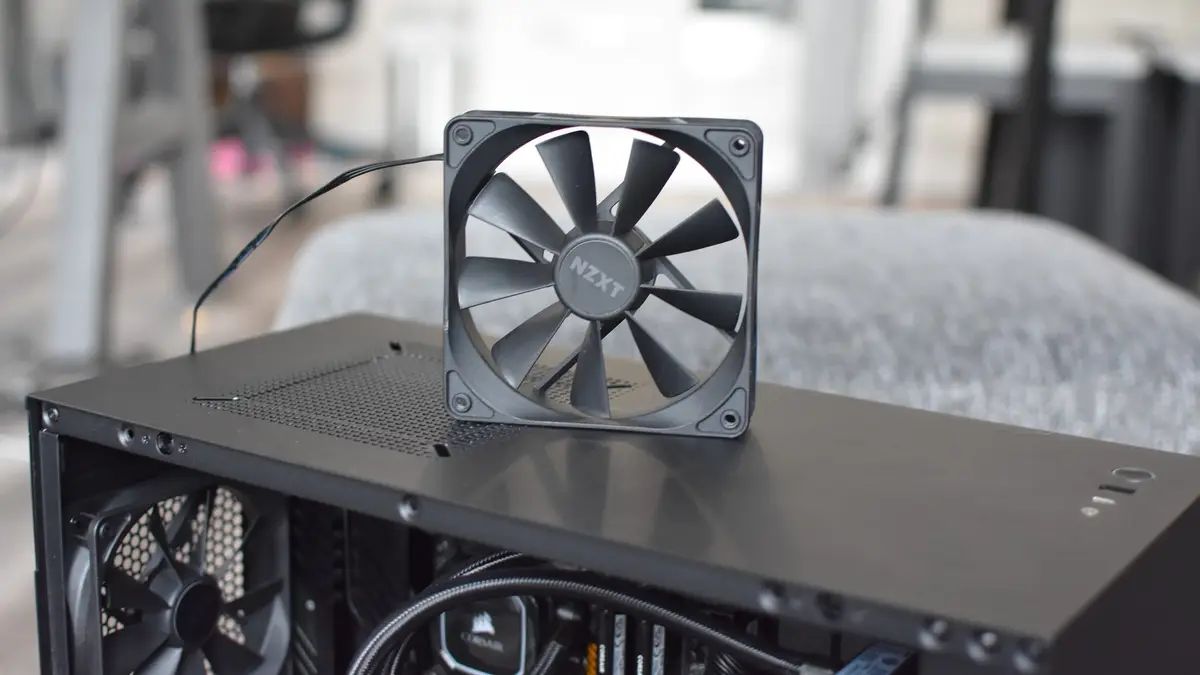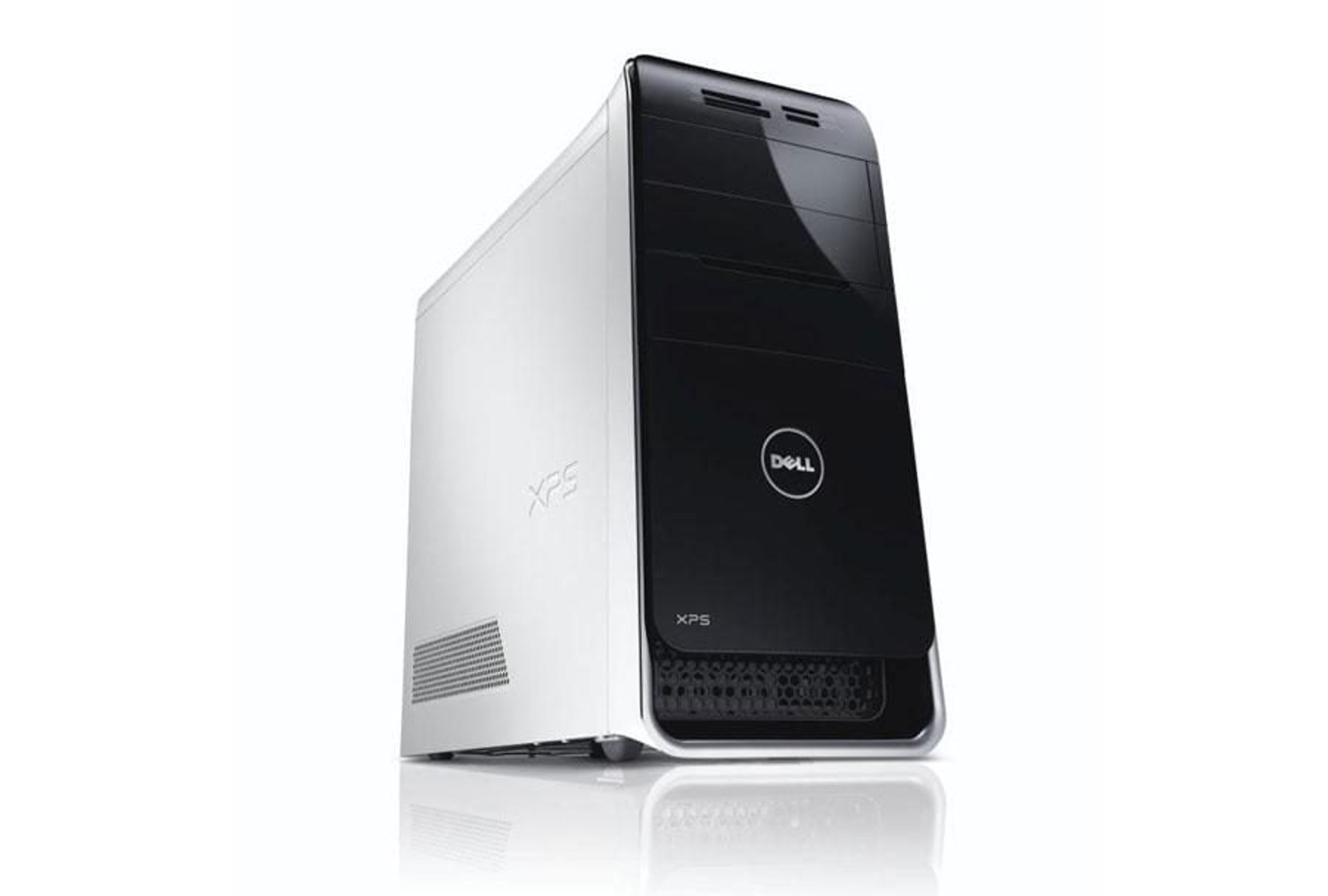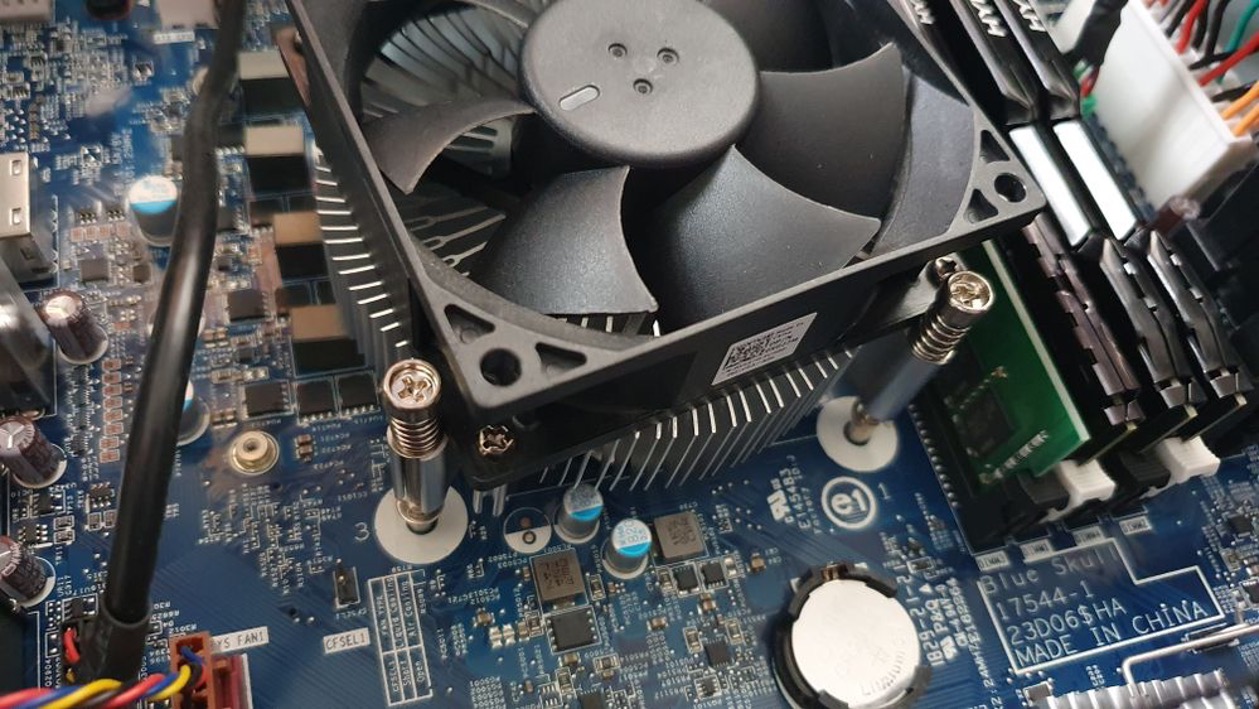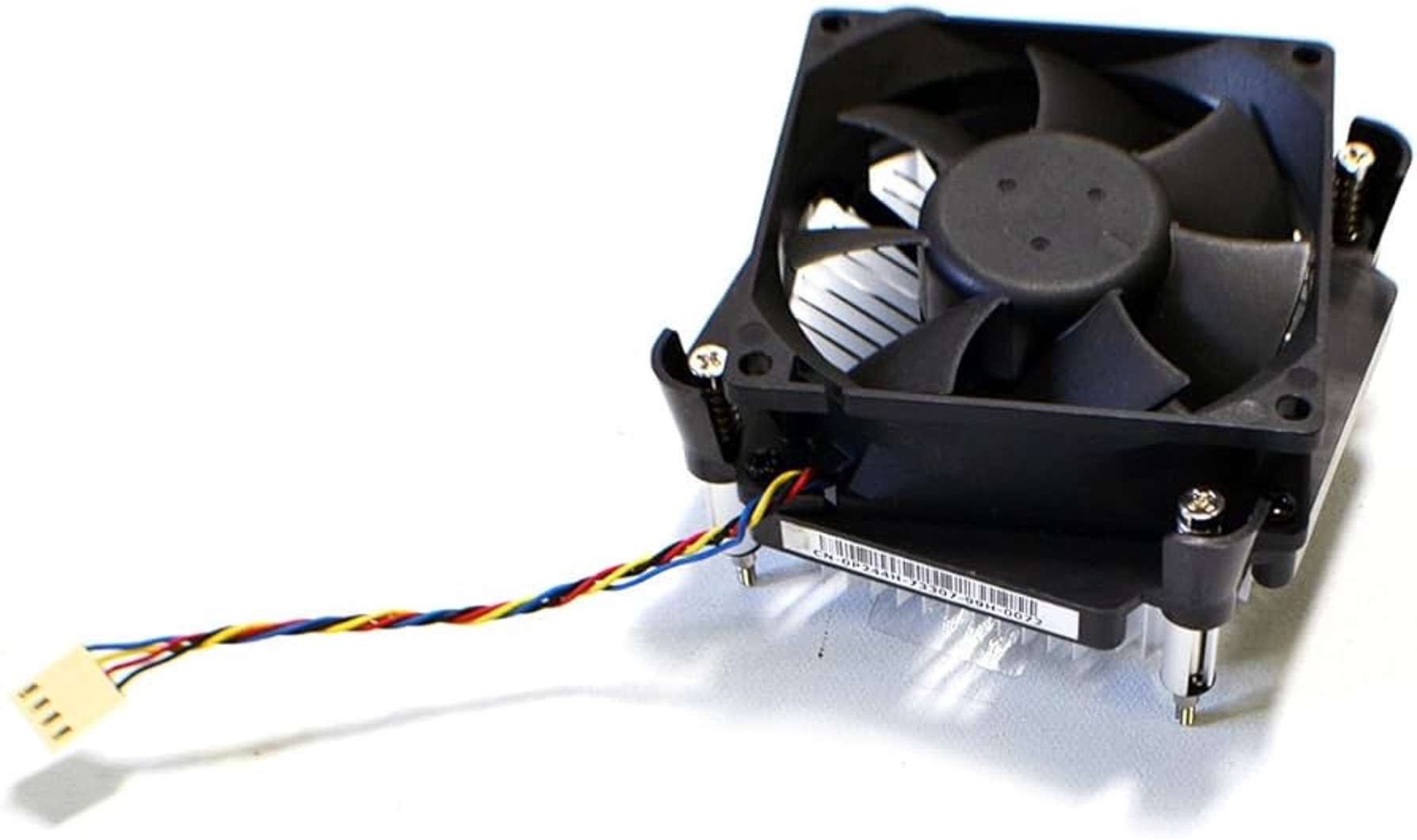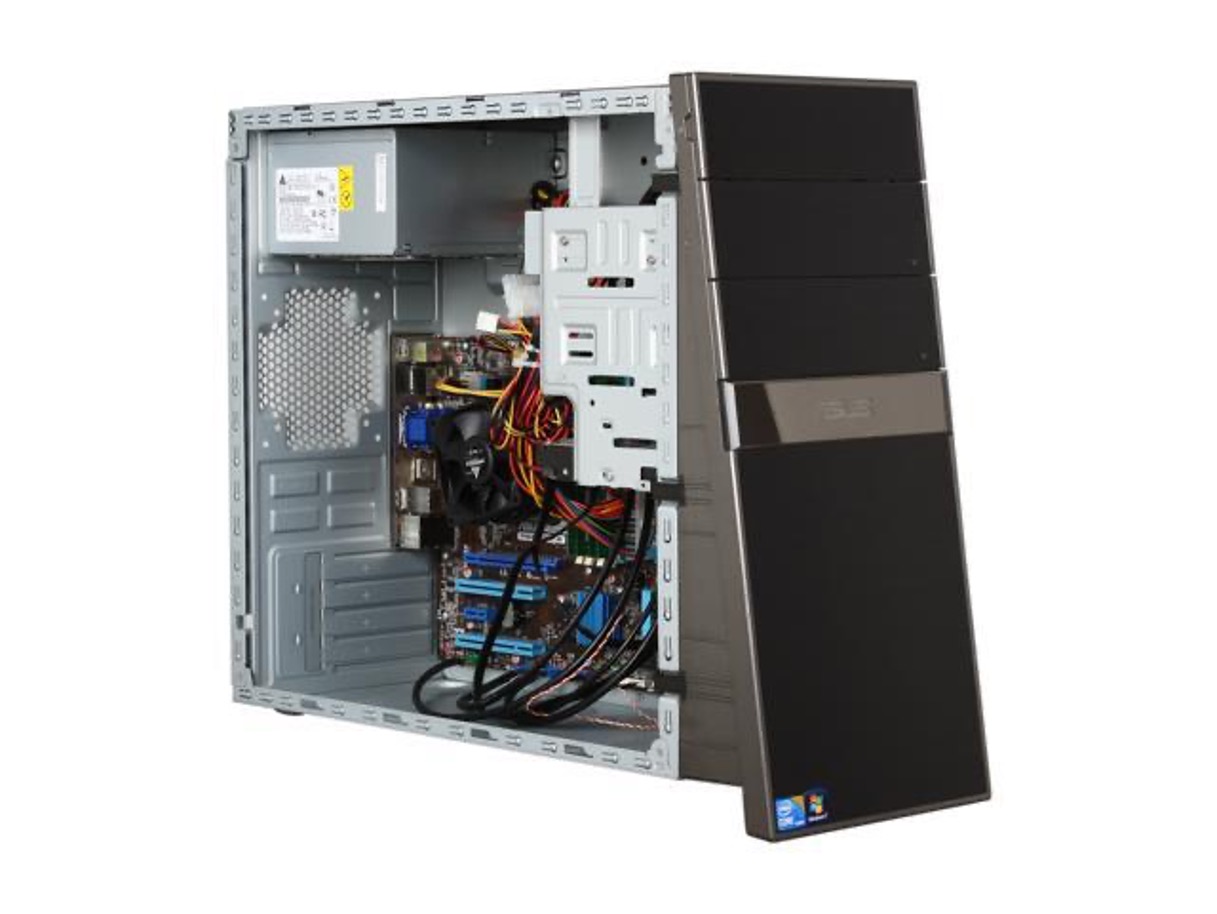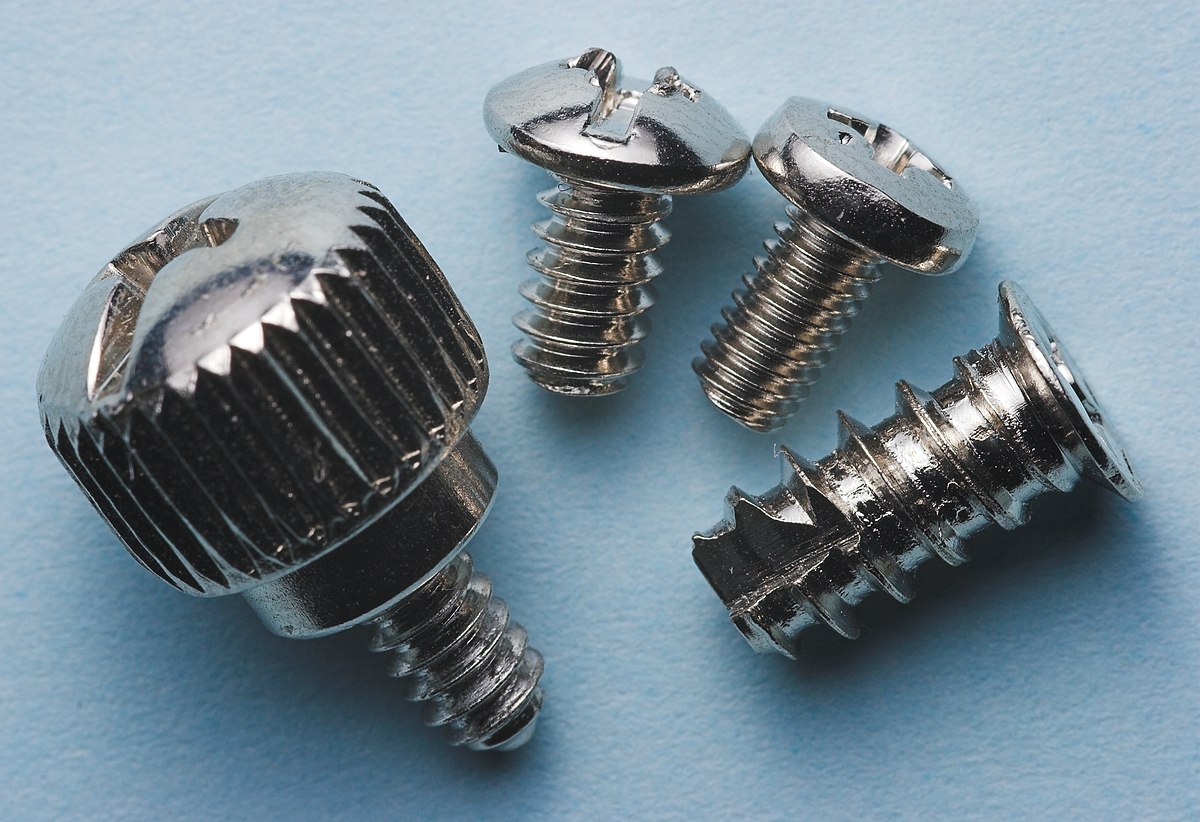Introduction
When it comes to keeping your computer running smoothly and efficiently, proper cooling is crucial. Overheating can lead to system instability, reduced performance, and even permanent damage to your components. One of the key components in cooling your computer is the case fan.
Case fans are responsible for circulating air inside your computer case, removing hot air and bringing in cool air to maintain an optimal temperature. However, finding the right size case fan for your computer can be a daunting task without the proper knowledge.
In this article, we will delve into the factors you need to consider when selecting the size of your case fan. We will discuss how the size of your computer case, airflow requirements, noise level, available space and mounting options, and the number of fans you already have all play a part in determining the appropriate fan size. Additionally, we will explore the different types of case fans available and provide guidance on how to measure the size of your current fan.
By the end of this article, you will have a clear understanding of what size case fan you need and why it is crucial to maintaining the optimal functioning of your computer.
Factors to Consider
When determining the size of the case fan you need, there are several factors to take into consideration. By carefully evaluating these factors, you can ensure that you select the right fan for your computer and achieve optimal cooling performance.
The Size of Your Computer Case: The dimensions of your computer case will directly impact the size of the case fan you can install. Most cases have designated fan mounting locations, and it is important to check the maximum allowable fan size for each location. Ensuring that the fan fits properly in the designated spot will prevent compatibility issues and maximize airflow.
Airflow Requirements: The amount of airflow needed to cool your computer effectively depends on the components you have installed and their respective heat output. High-performance hardware such as gaming graphics cards and overclocked processors generate more heat, requiring higher airflow to dissipate it. Research the recommended airflow specifications for your components and choose a fan that can meet those requirements.
Noise Level: Case fans produce noise while in operation, and it is essential to consider the noise level when selecting a fan. Fans with higher RPM (rotations per minute) tend to generate more noise. If noise is a concern for you, opt for fans with lower RPM or look for models designed specifically for silent operation.
Available Space and Mounting Options: Evaluate the available space in your computer case to determine where you can install additional fans. Consider factors such as the distance between components, cable management, and the potential impact on airflow. Additionally, check the available mounting options, such as 120mm or 140mm fan sizes, to ensure compatibility with your case.
The Number of Fans You Already Have: If you already have case fans installed, consider their size and location. Adding or replacing fans with different sizes can affect the overall airflow and disrupt the existing cooling system. Assess the current fan setup and make adjustments accordingly to maintain a balanced and effective cooling solution.
By carefully considering these factors, you can choose the right size case fan for your computer, ensuring optimal cooling performance while keeping noise levels in check. Next, let’s explore the different types of case fans available.
The Size of Your Computer Case
When it comes to choosing the right size case fan, the first consideration is the size of your computer case itself. Computer cases come in various form factors such as ATX, Micro-ATX, Mini-ITX, and more. The size of your case will determine the maximum fan size you can install.
Typically, computer cases have designated fan mounting locations, such as the front, rear, top, or side panels. These locations are designed to accommodate specific fan sizes, commonly 120mm or 140mm fans.
Before purchasing a case fan, consult your computer case’s manual or check the manufacturer’s specifications to determine the compatible fan sizes for each mounting location. It’s important to note that larger fans tend to move more air at lower RPMs, resulting in quieter operation. However, smaller fans may be suitable for tight spaces or when a specific mounting location requires a smaller size.
Measurements for case fans are typically given in millimeters (mm) and represent the dimensions of the fan’s frame. For example, a 120mm fan has a frame size of 120mm by 120mm. It’s important to ensure that the fan you choose matches the available mounting space in your case. Purchasing a fan that is too large may prevent proper installation or obstruct other components, while a fan that is too small may result in inefficient airflow.
Remember that some computer cases may also have additional clearance limitations, such as the height of the CPU cooler or the width of the graphics card. Therefore, it’s essential to verify not only the maximum fan size but also any potential clearance issues that may arise.
Considering the size of your computer case is vital when selecting a case fan. Ensure that you choose a fan that is compatible with the available mounting locations and does not interfere with other components within the case. By doing so, you can ensure effective cooling while maintaining optimal airflow and system performance.
Airflow Requirements
When selecting a case fan, one of the crucial factors to consider is the airflow requirements of your system. The airflow needed depends on the components installed in your computer and their heat output. Proper airflow ensures that hot air is efficiently expelled from the case while cool air is drawn in, maintaining optimal temperatures for your hardware.
High-performance components, such as gaming graphics cards and overclocked processors, generate more heat compared to standard components. This higher heat output necessitates increased airflow to prevent overheating. Manufacturers often provide recommendations or specifications for the required airflow for their components.
When assessing airflow requirements, consider the total thermal output of the components in your system. Most components have thermal design power (TDP) ratings that indicate the amount of heat the component is expected to dissipate under normal operating conditions. By adding up the TDP values of your CPU, GPU, and other components, you can estimate the total thermal output of your system.
Using this estimation, you can then determine the appropriate airflow for your case fan. Many case fan specifications include information about the amount of air it can move, commonly referred to as cubic feet per minute (CFM) or liters per second (L/s). Look for a fan that provides sufficient airflow to dissipate the expected heat output of your components.
It’s important to note that high CFM does not necessarily mean better cooling, especially if the airflow is not directed towards the components that need it the most. Consider the placement of your case fans to ensure that they are strategically positioned to provide direct airflow to critical components, such as the CPU cooler and graphics card.
Furthermore, it’s worth mentioning that a higher airflow may result in increased noise levels. Fans with higher RPM (rotations per minute) tend to generate more noise. If noise is a concern for you, consider opting for fans with lower RPM or models designed specifically for silent operation.
By understanding the airflow requirements of your system and choosing a case fan that provides adequate cooling, you can maintain optimal temperatures for your components and extend their lifespan. The next section will explore the impact of noise level when selecting a case fan.
Noise Level
While ensuring proper airflow is crucial for cooling your computer, another important factor to consider when selecting a case fan is the noise level it produces. Case fans are equipped with motors that rotate the fan blades, and this rotation generates noise as a byproduct.
The amount of noise generated by a case fan is typically measured in decibels (dB), with lower dB values indicating quieter operation. It’s important to find a balance between cooling performance and noise level, especially if you value a quiet computing environment.
When considering the noise level of a case fan, one essential aspect to look at is the fan’s RPM (rotations per minute). Fans with higher RPM tend to generate more noise compared to those with lower RPM. However, it’s worth noting that higher RPM fans also tend to provide more airflow, which can contribute to better cooling.
If noise is a significant concern for you, you can opt for case fans explicitly designed for silent operation. These fans are equipped with noise-dampening features such as special fan blade designs, rubber dampeners to absorb vibrations, and advanced motor technologies that minimize noise production.
Another factor that can influence noise levels is fan bearing type. Fans commonly use one of the following bearing types: sleeve bearings, ball bearings, or fluid dynamic bearings. Sleeve bearings are generally the most affordable but can produce more noise over time due to wear and tear. Ball bearings are more durable and tend to produce less noise, while fluid dynamic bearings provide a balance of durability and quiet operation.
When comparing different case fan models, it can be useful to check user reviews or manufacturer specifications that provide information about the fan’s noise level. These specifications are often listed as dB(A) or dBA, with lower values indicating quieter operation.
By considering the noise level when selecting a case fan, you can find a fan that strikes the right balance between cooling performance and a quiet operating environment. In the next section, we will explore the available space and mounting options to consider when choosing a case fan.
Available Space and Mounting Options
When selecting a case fan, it is essential to consider the available space and mounting options within your computer case. Different cases have varying designs, dimensions, and restrictions that can impact the types and sizes of fans you can install.
Start by assessing the available space in your computer case. Look for areas where you can mount additional fans, such as the front, rear, top, or side panels. Check if there are any specific fan mounting locations designated by your case manufacturer.
Consider factors such as the distance between components within the case. You want to ensure that the fan does not obstruct other components or interfere with cable management. It’s also crucial to take note of potential clearance issues, such as the height of the CPU cooler or the width of the graphics card.
In addition to the available space, you should also consider the mounting options provided by your computer case. The most common fan sizes are 120mm and 140mm. These sizes have become standard in many cases and offer a wide range of options in terms of performance and noise levels.
Determine the maximum allowable fan sizes for each mounting location in your case. Some cases may have compatibility for larger fans, such as 200mm or 230mm, which can provide increased airflow with lower RPMs. However, larger fans may not fit in all cases, so it’s important to check your case’s specifications and available clearance.
Do keep in mind that larger fans generally move more air at lower RPMs, resulting in quieter operation. However, smaller fans can be suitable for tight spaces or when a specific mounting location requires a smaller size.
Finally, consider the type of fan mounting options available. Case fans can be mounted using screws or using tool-less mounting systems provided by some cases. Ensure that the fan you choose is compatible with the mounting mechanism provided by your case.
By taking into account the available space and mounting options within your computer case, you can select a case fan that fits properly, provides effective cooling, and does not interfere with other components. In the next section, we will discuss how the number of fans you already have impacts your fan selection process.
The Number of Fans You Already Have
When choosing a case fan, it’s important to consider the number of fans you already have installed in your computer case. The number and placement of existing fans can greatly impact the overall airflow and cooling within your system.
If you already have case fans installed, take note of their sizes and locations. Adding or replacing fans with different sizes can disrupt the existing airflow and potentially lead to inefficient cooling. It’s crucial to maintain a balanced and effective cooling system.
Assess the current airflow dynamics in your case. Consider the direction of airflow, which areas of the case are being cooled most effectively, and if there are any hotspots where air circulation seems inadequate. This information will help you identify any gaps or areas that could benefit from additional fans.
When adding new fans, aim to enhance the overall airflow inside the case. For example, if you have a single rear exhaust fan, you might consider adding a front intake fan to create a more effective and efficient airflow pattern. This will help in pulling in cool air and pushing out hot air from the case.
Additionally, consider the power supply limitations of your system. Each fan requires power to operate, and the power supply must be able to handle the additional load. Check that you have available fan headers on your motherboard or use fan splitter cables if necessary to connect multiple fans.
Furthermore, keep in mind that adding more fans does not always equate to better cooling. There is a point of diminishing returns where the benefits of additional fans may be minimal. It is important to find a balance between adding sufficient fans for effective cooling and maintaining a manageable noise level.
By considering the number and placement of existing fans, you can strategically add new fans to optimize the overall airflow within your system. This will help ensure that your components remain cool and function optimally. Next, let’s delve into the different types of case fans available.
Types of Case Fans
When it comes to selecting a case fan, there are several types available, each with its own features and benefits. Understanding the different types will help you make an informed decision based on your specific needs and preferences.
1. Sleeve Bearing Fans: Sleeve bearing fans are the most common and affordable type of case fans. These fans have a simple design with a sleeve bearing that allows the fan to rotate smoothly. While they offer decent performance, they tend to produce more noise over time due to wear and tear. Sleeve bearing fans are suitable for budget-friendly builds where noise levels are not a major concern.
2. Ball Bearing Fans: Ball bearing fans are more durable than sleeve bearing fans due to the use of small metal balls that reduce friction. This design results in smoother rotations and less noise. Ball bearing fans are known for their longevity and are an excellent choice for systems that require constant operation or higher cooling performance.
3. Fluid Dynamic Bearing (FDB) Fans: FDB fans utilize a combination of oil and a magnetized rotor to reduce friction and noise. These fans offer improved airflow and quieter operation compared to both sleeve and ball bearing fans. FDB fans are ideal for those who prioritize performance and noise reduction.
4. PWM Fans: Pulse Width Modulation (PWM) fans are designed to offer greater control over fan speed. They are equipped with a 4-pin connector that allows for dynamic speed adjustment based on temperature fluctuations. PWM fans are beneficial for maintaining optimal cooling performance while keeping noise levels to a minimum.
5. High-Airflow or High-Static Pressure Fans: High-airflow fans are designed to move a large volume of air, making them suitable for increasing overall airflow within the case. These fans are ideal for systems with multiple components that generate a significant amount of heat. On the other hand, high-static pressure fans are designed to push air through dense arrays of heatsinks or radiators, making them ideal for liquid cooling setups.
6. RGB Fans: RGB fans are aesthetically appealing and can add a touch of customization to your computer. These fans feature built-in LED lighting that allows you to choose from a variety of colors and lighting effects to match your personal style.
Consider your cooling requirements, noise preferences, and budget when choosing the type of case fan for your system. Whether you prioritize durability, performance, noise reduction, or visual appeal, there is a case fan type available to meet your needs.
Now that you have an understanding of the different types of case fans, let’s move on to learning how to measure the size of your current fan.
How to Measure the Size of Your Current Fan
When replacing a case fan or purchasing an additional one, it is essential to measure the size of your current fan to ensure compatibility with your computer case. Here are the steps to accurately measure the size of your fan:
1. Turn Off Your Computer: Before measuring the fan, it is crucial to turn off your computer and unplug the power cord. This ensures safety and avoids any accidental damage during the measurement process.
2. Open Your Computer Case: Carefully open your computer case to access the fan you wish to measure. Make sure you have access to the front, rear, top, or side panel where the fan is located.
3. Measure the Frame Dimensions: Use a measuring tape or ruler to measure the dimensions of the fan’s frame. Measure the width (from one side of the frame to the other), the height (from the top of the frame to the bottom), and the depth (from the front of the frame to the back). These measurements will help you determine the fan’s size, typically given in millimeters (mm).
4. Confirm the Fan Size: Once you have measured the frame dimensions, compare them to the standard fan sizes available in the market, such as 120mm, 140mm, or larger sizes like 200mm or 230mm. Choose the closest matching size for your fan.
It’s important to note that the frame size does not always directly correspond to the size of the fan blades. Fan manufacturers often design the fan blades to be slightly smaller than the frame to ensure proper airflow and avoid obstruction. Therefore, focus on measuring the frame dimensions for compatibility.
Keep in mind that some computer cases may have specific requirements or restrictions for fan sizes in certain mounting locations. Consult your case manual or manufacturer specifications to ensure compatibility with the fan size you have measured.
By accurately measuring the size of your current fan, you can confidently purchase a replacement fan or additional fan that fits your computer case and enhances cooling performance. Proper sizing ensures optimal airflow and prevents any compatibility issues.
Now that you know how to measure your fan size, let’s highlight the importance of proper cooling in your computer system.
The Importance of Proper Cooling
Proper cooling is vital for maintaining the optimal functioning of your computer system. Without adequate cooling, your components can overheat, leading to a range of issues that can impact performance, stability, and the lifespan of your hardware.
1. Temperature Regulation: Cooling is essential for managing the temperature of your components. Excessive heat can cause thermal throttling, where the components automatically reduce their performance to prevent damage. This can result in decreased system responsiveness and overall performance.
2. System Stability: Overheating can lead to system instability and frequent crashes. When components reach their temperature limits, they can become unpredictable, causing your system to freeze or shut down unexpectedly. Proper cooling helps maintain consistent temperatures, ensuring stable and reliable operation.
3. Component Longevity: Excessive heat is a major contributor to the degradation and premature failure of computer components. Prolonged exposure to high temperatures can shorten the lifespan of your sensitive hardware, such as the CPU, GPU, and motherboard. By keeping your components cool, you can extend their longevity and avoid costly replacements.
4. Performance Optimization: Cooling your components effectively allows them to operate at their optimal performance levels. Overheating can result in reduced performance, as components may throttle their frequencies to manage heat. By providing adequate cooling, you can maximize the performance potential of your hardware.
5. Noise Reduction: Proper cooling can also contribute to reducing noise levels. When the system is adequately cooled, fans can operate at lower speeds, resulting in quieter operation. This can significantly enhance the overall computing experience, especially for those who prefer a quieter environment.
Ensuring proper cooling in your computer system involves not only selecting the right case fans but also considering other factors such as proper cable management, efficient airflow design, and maintaining a clean and dust-free environment. Regularly cleaning your computer and removing any accumulated dust helps facilitate better airflow and prevents heat buildup.
By prioritizing proper cooling, you can safeguard the performance, stability, and longevity of your computer system. Investing in high-quality case fans and adopting effective cooling practices will go a long way in protecting your valuable hardware and optimizing your computing experience.
With a clear understanding of the importance of proper cooling, we have covered the key factors you need to consider when selecting the size of your case fan. By taking into account the size of your computer case, airflow requirements, noise level, available space and mounting options, the number of fans you already have, and the types of case fans available, you can make an informed decision to ensure optimal cooling for your computer system.
Conclusion
Choosing the right size case fan is crucial to maintaining optimal cooling performance and protecting the longevity of your computer system. By considering factors such as the size of your computer case, airflow requirements, noise level, available space and mounting options, the number of fans you already have, and the types of case fans available, you can make an informed decision.
Ensure that the fan you choose fits within the designated mounting locations of your computer case and provides sufficient airflow to keep your components cool. Consider the noise level that is acceptable to you and opt for fans designed for quiet operation if noise reduction is important. Evaluate the available space and remember to maintain a balanced fan setup to avoid disrupting the existing airflow dynamics.
Take the time to measure the size of your current fan accurately and select a replacement or additional fan that matches the dimensions of the existing one. This will ensure compatibility and prevent any issues when installing the new fan.
Proper cooling is essential for temperature regulation, system stability, component longevity, performance optimization, and noise reduction. By maintaining optimal temperatures, you can prevent performance throttling, system instability, premature component failure, and maximize the performance potential of your hardware.
By understanding the importance of proper cooling and carefully considering the factors involved in selecting the right size case fan, you can make an informed decision that suits your specific needs and preferences. Prioritize cooling to safeguard your computer system, enhance its performance, and enjoy a smooth and reliable computing experience.







